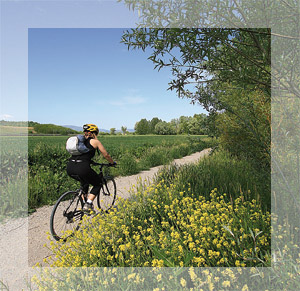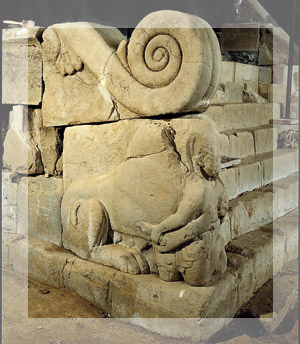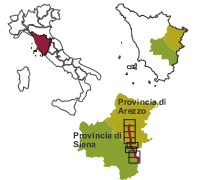THE SENTIERO DELLA BONIFICA
In the name of man and nature

To travel slowly along the Canale Maestro della Chiana [Master Canal of the Chiana area] between Siena and Arezzo signifies discovering the quality of a land which man’s genius has recuperated from out of the water. But not only. Etruscan civilization’s magical roots lie in the midst of this broad valley.
The Val di Chiana is an area in perpetual movement and the century-old land reclamation is a symbol of its continuous transformation.
Engineers, mathematicians, hydraulic experts, cartographers, agronomists and architects all collaborated in the land reclamation of this territory: from Leonardo da Vinci to the Arezzo born Vittorio Fossombroni, a brilliant technician who worked on the project for over 50 years, right up till his death in 1844. The Canale Maestro della Chiana is an historical hydraulic engineering achievement which even nowadays, plays an important role in this area. In ancient times, the “Clanis” river flowed, through the Paglia river, towards the Tevere, thus flowing southwards. Around the 11th century, the valley begun to turn into marshland due to the land around Chiusi slowly rising because of tectonic movements and erosive materials deposited there. Therefore, the “Clanis” river was unable to flow smoothly towards the Tevere River and instead, flooded the valley for the next five centuries. The first attempt to resolve this situation was carried out by the Medici, and was then continued by the Asburgo - Lorena family, the Grand Dukes of Tuscany, so thus began the transformation of this valley. The land reclamation and the realization of the ‘Canale Maestro’, across reclaimed areas, canal bridges, tunnels, drains and locks, changed the direction of the water which now flows northwards to eventually flow into the Arno. The result of this, after this area being marshland for centuries, is nowadays one of the most fertile Italian valleys: it spreads over 185 sq. km, 80 of which have been reclaimed and drained out of the marshes, and are protected by embankments, extending for 630 km.
protected by embankments, extending for 630 km.
As a consequence, you can cycle along a truly ‘noble’ pathway, shaped by man and by mother nature, working together in total harmony. A different concept of time is this cycle path’s essential factor, in the sense that the joy of going slowly is rediscovered and in the sense of travelling back through time to the distant and enigmatic past of the Etruscan civilization. But the present is, too, to be discovered, on the footsteps of this fascinating past history, along a route which starts from Chiusi in the labyrinth of Porsenna, the Etruscan king who dared to challenge Rome and actually conquered it, right up to Arezzo’s Chimera, a famous bronze statue dating back to the 4th century B.C. (now in the Archeological Museum of Florence). This Etruscan journey takes you through legends and mysteries, thousand-year-old Walls and necropolises at Cortona and Castiglion Fiorentino: places where it is easy to lose oneself in intriguing questions which come to mind about a population which, many centuries before Christ, already knew how to express themselves as a modern people, going beyond the limits of time. “Live” traces of the ancient Etruscan Curtun [Cortona] are visible in the 3rd-2nd century B.C. ‘Tabula Cortonensis’ [the Cortona Tablet]; this Tablet is one of the most important documents of Etruscan civilization. It is, in fact, a contract that certifies the sale of lands between Cortona families, proving the intense agricultural and commercial activity of the times. Impressive sandstone blocks can still be seen in the Walls of Castiglion Fiorentino, another Etruscan capital and an important place on our journey.
Thus, history but also nature makes up this border area of Tuscany where the mirror-like waters of the lakes of Chiusi and Montepulciano, rich in flora and in fauna, registered in the C.N.R [National Research Council] as important biotopes, represent an extremely interesting natural oasis for touring cyclists who are also bird watching enthusiasts.



















 Informacion
Informacion Informations
Informations Informatie
Informatie Informationen
Informationen







 protected by embankments, extending for 630 km.
protected by embankments, extending for 630 km.